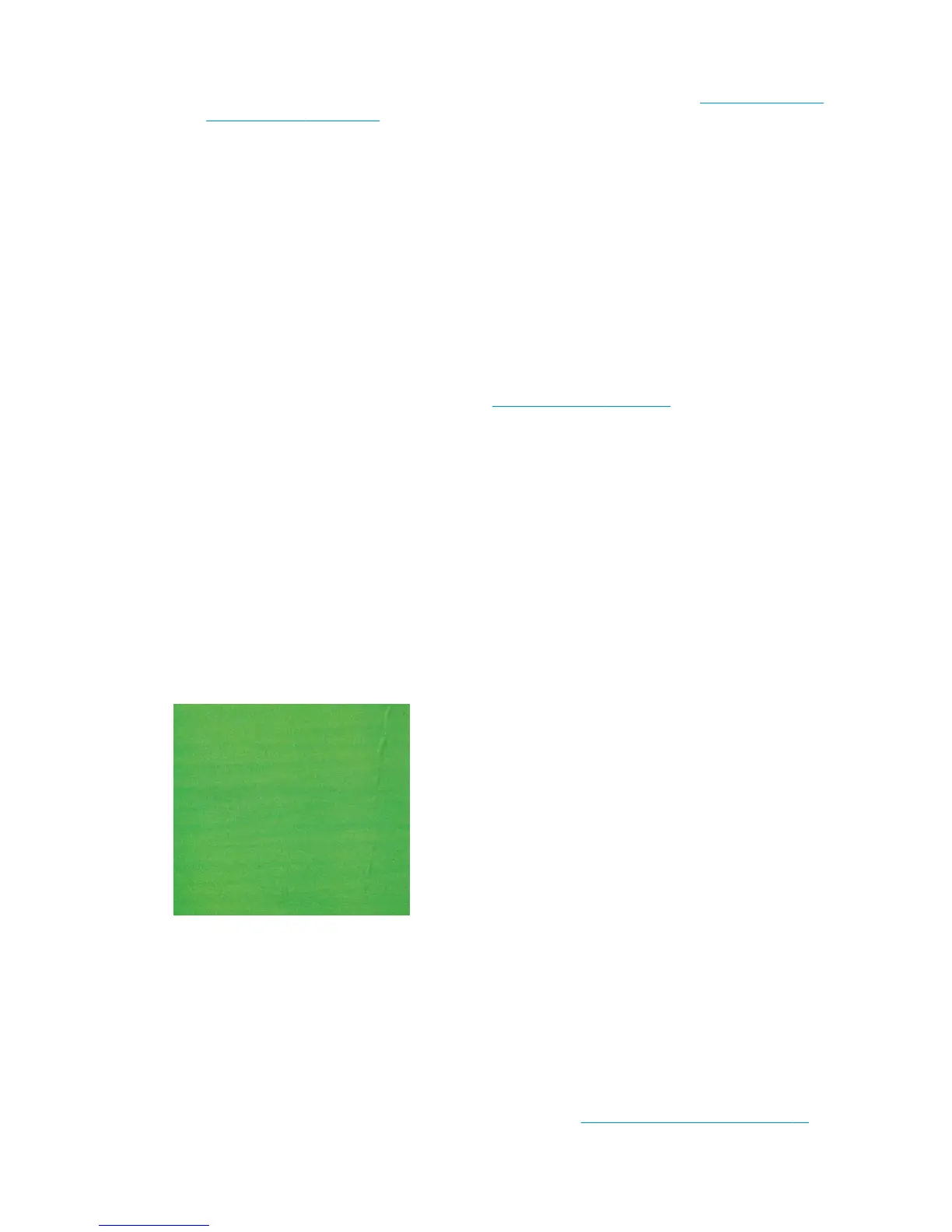To check printhead alignment, print the printhead alignment diagnostics plot (see Printhead alignment
diagnostics plot on page 101). As a general rule, the biggest contributors to light-and-dark banding
caused by printhead alignment are (in this order):
◦
Bidirectional alignment
◦
Intra-color alignment (alignment between the two printheads of the same color)
◦
Inter-color alignment (alignment between different colors)
Here are some tips for solving this problem:
◦
If the printhead alignment was done with a different substrate of different thickness, probably a
new printhead alignment is needed.
◦
If the problem comes from an automatic printhead alignment, you can try manual alignment for
better control of the alignment process.
◦
If the problem comes from a manual alignment, fine-tune it by identifiying the offenders in the
printhead alignment diagnostics plot. See
Manual alignment on page 98.
Gloss banding
This appears in dark, high-density areas as horizontal gloss or matte bands about 1 cm wide. It can happen
when the curing system settings are not correct for the substrate.
If the bands are more apparent when tilting the print or changing your viewing position, then it is likely to be
gloss banding.
To solve the problem, check your curing settings (airflow, curing temperature). You could also try using a
different print mode.
Aeroworms
This consists of thin bands with higher density than the surrounding area. They are about 6 cm long and have
a horizontal tendency, but they tend to curve like worms. They are not continuous across the substrate, and
seem to appear at random.
When the ink is being fired, there are airflow turbulences under the carriage that can affect the positioning of
the drops. Therefore, some waves of ink can be formed and deposited on the substrate to create this effect.
Here are some tips for solving this problem:
●
Increase the number of passes.
●
Reduce the ink density.
●
Check the printhead-to-ribs spacing in the Internal Print Server. If it is higher than normal, try reducing
it.
●
Check that the aerosol filters are not saturated or broken (see
Replace the aerosol filters on page 83).
238 Chapter 10 Troubleshoot print-quality issues ENWW
